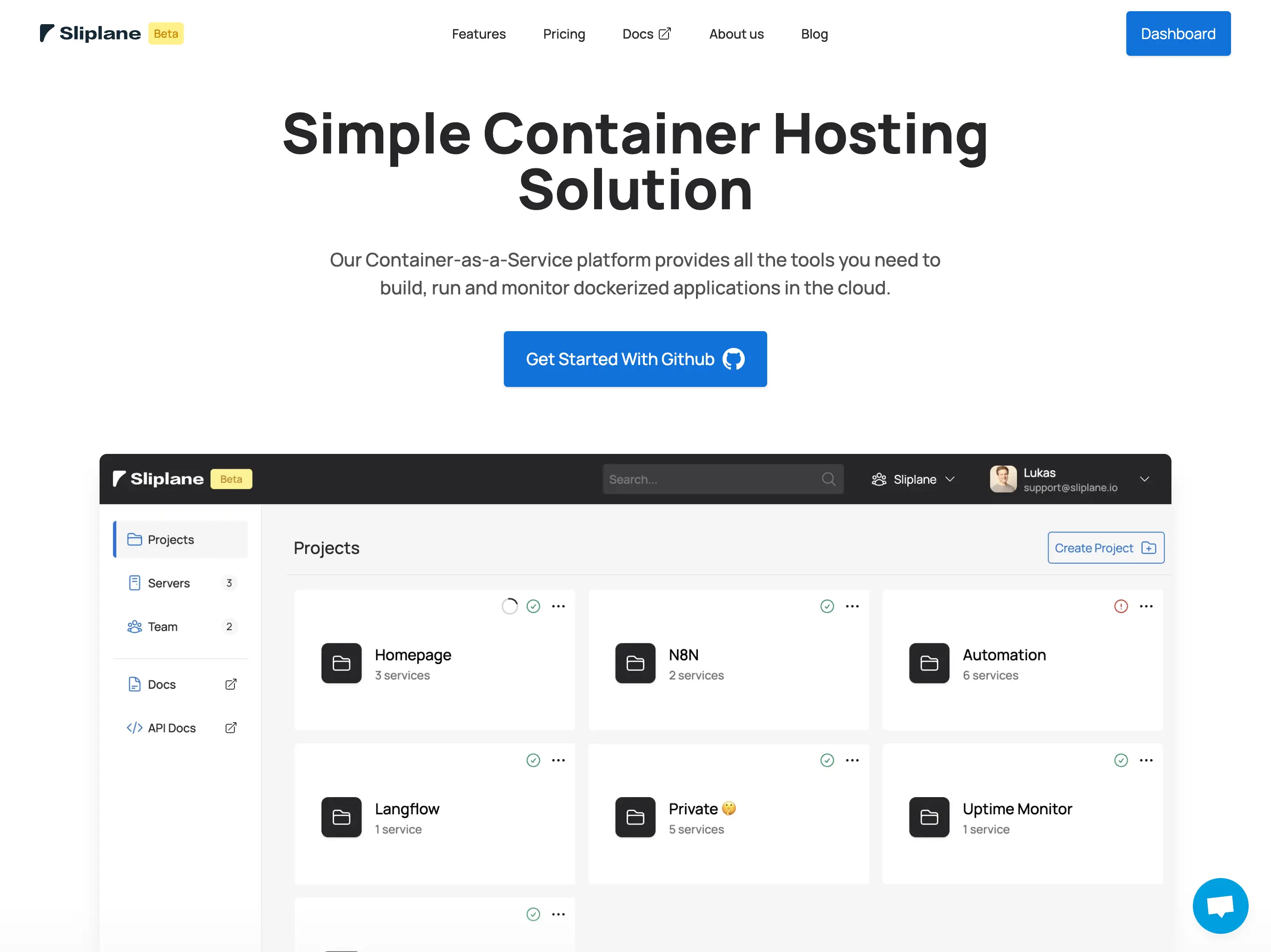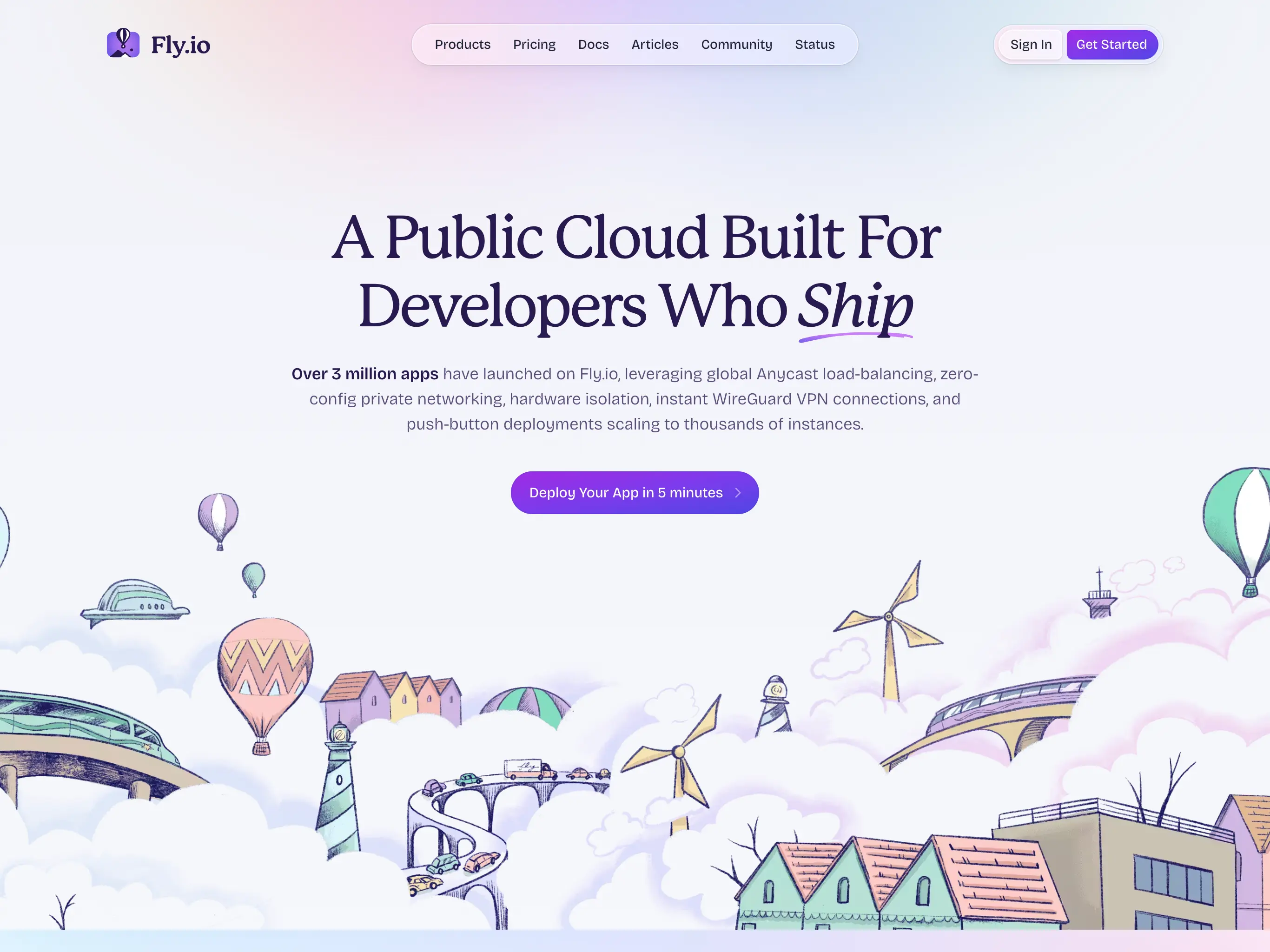
5 Awesome Vercel Alternatives
 Lukas Mauser
Lukas MauserVercel has been one of the most hyped platforms for deploying frontend apps in recent years - their recipe is simple: wrap AWS in a sleek UI and slap a 10x higher price on there. They catch people with "it's so easy to deploy", and then hit them with a $100k surprise bill. But if simplicity is the only reason you opted for vercel, there are other tools out there, that do the job just as well for a fraction of the price!
Quick Comparison
| Platform | Ease of Use | Pricing | Best For | Trade-offs |
|---|---|---|---|---|
| Sliplane | ⭐⭐⭐⭐⭐ | Pay per server | Full-stack apps, multiple projects | Not serverless, limited scale |
| Coolify | ⭐⭐⭐ | Self-hosted (cheapest) | DevOps people, full control | Requires server maintenance |
| Render | ⭐⭐⭐⭐⭐ | Steep price increase | Quick productivity | Get's Expensive fast |
| Fly.io | ⭐⭐⭐ | Reasonable | Global edge deployment | Manual containerization required |
| AWS | ⭐⭐ | Low cost | Enterprise, specific needs | Steep learning curve |
1. Sliplane

Sliplane is a european platform as a service, that makes deploying containerized apps simple. Just like Vercel, you can connect your github repo and have your app deployed in minutes. A simple git push will trigger new deployments and keep your app up to date.
To be real: sliplane is not serverless, it's not unlimited scale, and its not targeting enterprise clients. On the flipside, you don't run into uncapped costs, you get simple and predictable pricing and the container model enables you to deploy anything from frontend to backend to databases, job queues and much much more. You can even spin up all kinds of hot new open source apps from the one click presets.
On top sliplane provides a unique pay-per-server pricing model: you only pay for the server you provision, and can run multiple apps on there without paying extra for each app. This makes sliplane extremely cost effective for hosting multiple small apps, internal tools or POCs.
Choose sliplane if you are looking for a simple, cost effective alternative, that gives you the freedom to deploy the full stack.
2. Coolify

Coolify tries to bring the Vercel experience to your own servers! It's fully open source and you can use it to deploy your apps on your own VPS or dedicated server.
Sure, in terms of complexity, you need to take care of server maintenance and security updates, but on the other hand, it's by far the cheapest option.
Coolify is perfect if you're not afraid of getting your hands dirty and want complete control over your stack. The self-hosted approach is really powerful for teams with DevOps expertise or to get started cost-effectively.
3. Render

In terms of simplicity, the whole experience on Render comes pretty close to Vercels. That is also it's main advantage, connect a GitHub Repo and get started in minutes! You can also choose from a variety of complementary services like managed databases, cron jobs and more, that make the platform overall more feature rich compared to Vercel.
However, both platforms have a common denominator: they can quickly become expensive. Even though there's a free tier, costs rise steeply beyond that - a boutique PaaS for developers.
Render is an excellent choice for developers who want to be productive quickly. The excellent developer experience is one of Render's main advantages, but at the expense of budget.
4. Fly

This provider goes a different direction. Fly.io can be another interesting alternative to deploying to Vercel.
The biggest similarity: you can deploy your applications on a global edge computing network with low latencies and simple scaling and in comparison to Vercel, Fly.io offers very reasonable pricing.
The downsides: they sit a little lower on the abstraction ladder compared to Vercel, Sliplane or Render. There is no automatic build pipeline, you need to containerize your apps first and manually deploy from their CLI.
If that's not a problem and you are willing to make some tradeoffs in terms of developer experience, Fly.io can be a great choice especially if deploying globally is one of the main reasons, you used Vercel in the first place.
5. AWS

As mentioned before, Vercel is basically AWS with a fancy UI. So why not cut the middleman and save big time?
When it comes to security and scalability, AWS is one of the best options out there. However, you pay Vercel for the simplicity, so if you go the AWS route, be prepared for getting your hands dirty.
There are some AWS products that make deploying apps easier, for example AWS Amplify or AWS App Runner however, they still require extensive AWS knowledge to get started and in terms of simplicity, these products are not comparable to what Vercel offers.
Choose AWS if prices are your main concern, you are comfortable with the platform or if you have some specific needs that the AWS ecosystem covers well.
Summary
Vercel is simple and scalable but expensive and limited! If you are looking for something as simple but need more features and you don't mind the price tag, check out Render. If you looking for a more budget friendly option that doesn't need unlimited scalability, give Sliplane a shot. If you are willing to get your hands a little dirty, you might want to check out Coolify, Fly.io or using AWS directly.